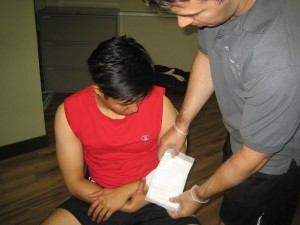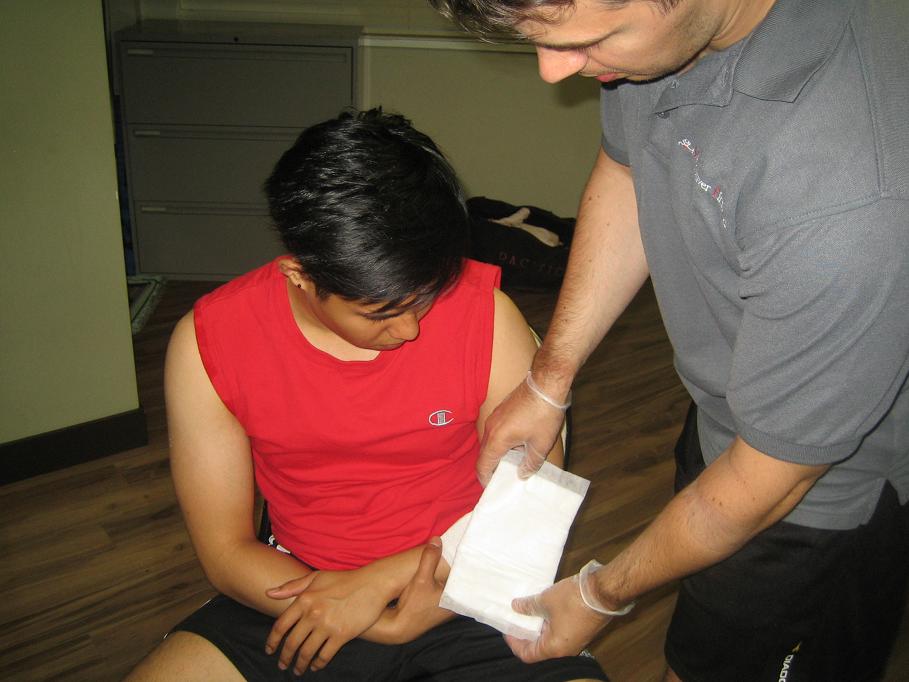A wound can become prone to infection if proper treatment is not administered to it. Minor wounds may not require medical treatment but a puncture wound will. Minor wounds like scratches and small abrasions can simply heal on their own but an open wound will require more medical attention. If the wound appears to be minor and doesn’t require a tetanus shot, it can easily be managed with simple treatment at home. A puncture wound may not result in an open wound but it does not mean that it should be neglected as it can become a source of tetanus infection. Read on to find out what makes this wound a serious injury and how to manage it.
The material posted on this page on managing puncture wounds is for learning purposes only. To learn to manage minor and major wounds including embedded objects, puncture wounds, chest flail, infections and more by enrolling in a standard or emergency first aid course.
What is a Puncture Wound?
A puncture wound is not like an ordinary wound. It usually manifests as a tiny break in the skin where the object that punctured the skin gains entrance. It does not usually bleed but no matter how small the wound is it carries with it the potential risk of infection. Stepping on a nail for instance may cause a small puncture wound to the skin but a dirty nail with rust on it may result to a tetanus infection. Wounds coming from an animal bite may cause rabies which also requires immediate medical attention.
What to do with a puncture wound?

The first thing to do whenever you get a puncture wound is to clean the affected area. It is also necessary to remove the object or the thing that punctured the skin. Wash the wound with soap and running water to clean the dirt surrounding the wound and to prevent the spread of bacteria. Wipe the area dry and apply an antiseptic to prevent infection. Cover the area with clean gauze to protect its exposure to dirt.
If what caused the punctured wound is a splinter, some tape and a tweezer may come in handy. Simply place the tape on the splinter and it will just stick to the tape so it is easy for you to pull it out. Use the tweezer if the tape does not work. If the wound is bleeding, applying gentle pressure will help stop the bleeding. In certain cases, you need to check the wound from time to time to see if there is an infection. Check for any sign of warmth, swelling or redness. Make sure to keep the wound clean at all times and regularly change the bandage. Keeping a first aid kit in handy will help you attend to the wound almost immediately. If the puncture wound occurs on the feet especially when it is contaminated with dirt or it is caused by a nail or an animal bite, make sure to see your doctor for proper treatment. Keep your tetanus shots current.
References:
Mayo Clinic. Puncture Wounds: First Aid. Accessed on May 31, 2014 from http://www.mayoclinic.org/first-aid/first-aid-puncture-wounds/basics/art-20056665
WebMD. First Aid and Emergencies – Puncture Wounds. Accessed on May 31, 2014 from http://www.webmd.com/first-aid/tc/puncture-wounds-home-treatment

